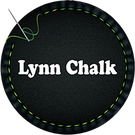There are several drapery pleat styles to choose from.
Triple Pinch Pleat
Triple Pleats are sewn and tacked several inches down from top of drape.


Double Pinch or Butterfly Pleat
Double Pleats are sewn and tacked several inches down from top of drape.


Triple Euro Pleat
Triple Pleats are sewn and tacked at top of pleat


Double Euro Pleat
Triple Pleats are sewn and tacked at top of pleat

 Inverted Box Pleat
Inverted Box Pleat
Inverted Pleats are the reverse of the above pleats with the fullness sewn into the back of the drapery header instead of the front like the above pleats.
Inverted pleated drapes when used as stationary/decorative drapes show a clean flat face when the panel is full extended at the top. If you want these to be functional, you can open and close these and decide how you want to stack the panel. Below is a picture of the drape with a flat header on the left and the right picture shows what the drapery panel would look like if you stacked the pleats together.



Cartridge Pleat
Uses 1 Seam to create a soft fold for each pleat. They can be very loose, like in the picture on the left, or the cartridge pleat can be stuffed with tissue paper to accentuate the rolled fold like in the picture on the right, or left unstuffed.

Full view of a cartridge pleated panel.

Flat Panel With No Pleating
Folds must be manipulated by hand
This style is a totally flat panel with no pleats. The pleats can be arranged loosely for a casual look like the picture on the left. Or the pleats can be molded by hand to create soft folds close together and all the way down the panel like the picture on the right. Flat panels look best as stationary/decorative panels as you can arrange them the way you want them to look and they will hold their position. Flat panels have no structure at the top, so if you open and close them you will have to manipulate the folds by hand at the top as they will otherwise just bunch together. We can install drapery hooks along the top of the header which you can insert into standard drapery rings with eyelets. Or if you want to use clips, you can just clip the fabric into the clip like the picture of the Fuchsia Iconic Leopard Drapes below.

Full Panel View of Flat Panel Drapes

Flat Panel Hung with Clips
A Flat Panel using Drapery Rings with Clips. The Panel is flat, and you just clip the fabric into the clips and space the clips however far apart you want based on the size folds you want to create.

Flat Panel with Back Tabs
This style of flat panel has tabs sewn into the back of the drapery header (see picture on the right). The tab size is based on the diameter of the pole you are using. To hang the drapery panels you just slide the pole into the tabs which will then create these nice soft folds. These are probably best for stationary/decorative drapes. They can be hard to manage if you want to open and close them, depending on the length of the drapes. If you are able to reach the top of the drapes it would be a little easier to open and close them. If the top of the drape is out of reach it is more difficult.


Rod Pocket
A simple Rod Pocket is sewn at the top of the drapery panel based on the diameter of the pole you will be using. It is softly gathered onto the pole creating a loose soft drapery panel. This style is best for stationary/decorative drapery panels as they can be difficult to open and close.





